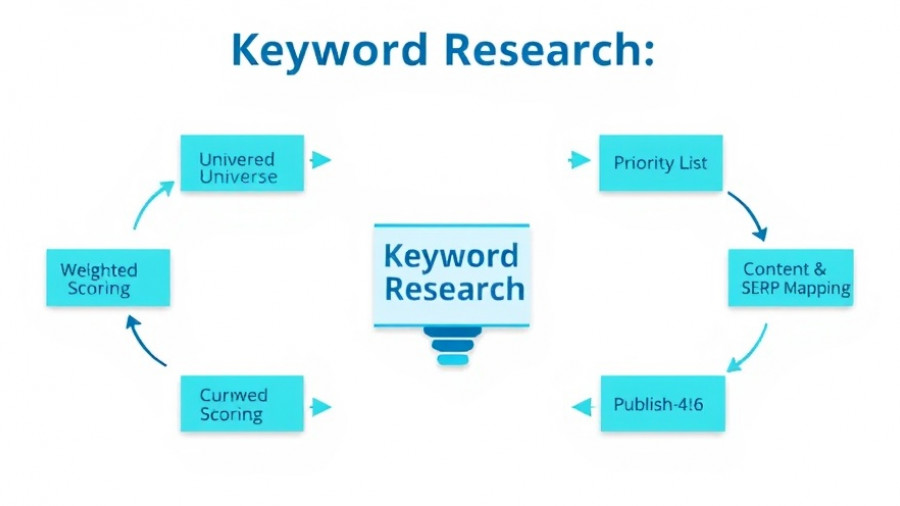
The Low-Volume Keyword Conundrum: Is It Worth It?
When it comes to digital marketing, especially in the realm of SEO, a common debate arises: should focusing on low-volume keywords be avoided altogether? Many professionals, business owners, and marketers seem to shun these keywords, thinking they won't draw in sufficient traffic or engagement. But might that be a misstep?
Understanding the Value of Low-Volume Keywords
Low-volume keywords might seem unappealing at first glance due to their seemingly limited reach. However, they offer several unique advantages that should be on your radar. First, these keywords often have less competition, meaning that your chances of ranking high in search engine results pages (SERPs) are greater. This can lead to higher click-through rates (CTR) and conversions, particularly for niche products or services. Additionally, they often reflect specific buyer intent, leading to more qualified leads.
Connecting Low-Volume Keywords to Content Strategy
Integrating low-volume keywords into your content marketing strategy can enhance your overall SEO performance. These keywords can help to create a more comprehensive content strategy that caters to diverse user intents. As a result, they not only enrich your site's content but can also provide a better user experience, ultimately enhancing your site’s engagement metrics.
The Power of Long-Tail Keywords
Often a subset of low-volume keywords, long-tail keywords can tap into very specific search queries. For instance, instead of targeting a broad keyword like 'shoes,' a long-tail variant such as 'best running shoes for flat feet' hones in on a clear user intent. Long-tail keywords typically attract visitors further along the buyer journey and who are more likely to convert.
Case Studies Revealing Success with Low-Volume Keywords
There are numerous examples of successful brands utilizing low-volume keywords to their advantage. A well-known e-commerce site focused on specific product attributes, targeting low-volume yet highly relevant keywords. This led to them dominating SERPs for those niche searches, subsequently increasing their sales by a noteworthy percentage. Such successes highlight the untapped potential that low-volume keywords can offer.
Analyzing Risks and Challenges
Despite their benefits, there are challenges to be mindful of when using low-volume keywords. They can result in low traffic numbers overall, which some businesses might consider a failing strategy in relation to broader keyword targets. However, the key lies in balancing low-volume keyword performance with broader SEO efforts, ensuring that they complement a multi-pronged approach.
Future Trends in Keyword Strategy
With evolving search engine algorithms and the rise of voice search optimization, the relevance of keywords is also shifting. Making room for low-volume keywords may prove even more beneficial as search engines become better at understanding user intent. Thus, a collection of niche keywords may not just contribute to increased traffic, but also improve positioning in a competitive landscape.
Practical Tips for Implementing Low-Volume Keywords
To effectively incorporate low-volume keywords into your strategy, start by conducting thorough keyword research. Utilize tools like Google Keyword Planner or SEMrush to identify relevant low-volume terms. Ensure that you integrate these naturally within your high-quality content, supporting them with informative resources and engaging formats, like videos or infographics. This improves the chances of your content being shared, increasing visibility.
Conclusion: Embrace the Art of Keyword Diversity
In the fast-paced world of digital marketing, dismissing low-volume keywords could mean missing out on valuable opportunities. While focusing on high-volume keywords may yield instant gratification in terms of traffic, the sustained value may lie within the unnoticed. So, as you navigate your content and SEO strategies, remember to engage with low-volume keywords thoughtfully—they might just open new doors for your brand.
 Add Row
Add Row  Add
Add 




Write A Comment